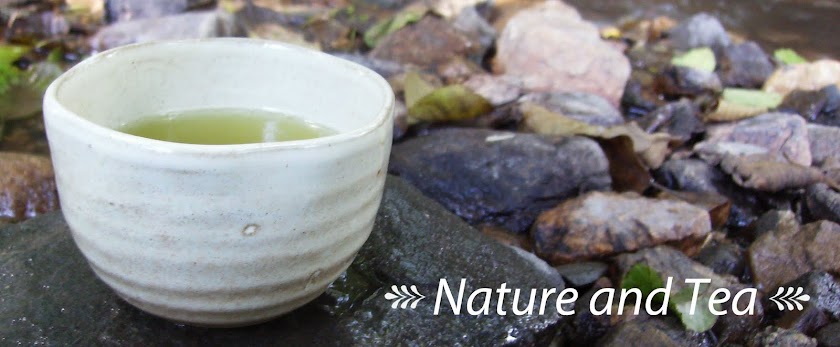Tea leaves for Fuuki (which means "Riches and honors") were harvested near Tanabe and Ayabe in Kyoto prefecture from Gokoh and Yabukita varietal.
I dont drink japanese teas very often- I like them very much, but there are so many teas and it is nearly impossible to have wider overview and knowledge in all types of tea. If you are mainly interested in japanese tea I would really recommend poemtea.blogspot.com.
These teas are always a bit special for me. When I brew Sheng, I usually brew it very spontaneously and naturaly - like breathing- and I dont think very much about it. But sencha or gyokuro? Exact temperature, brewing times etc.. It can look bonding at first look, but sometimes rules, codes and formulas are very freeing. Like mantras, they can help to clear your mind and stay focused. Its always a small ceremony when I brew japanese tea.
I used my smallest Shiboridashi made by Peter Novak. Its made of porcelain and glazed with Czech feldspar.
I used traditional way of preparing gyokuro. Water just above the leaves, almost lukewarm temperature and steeping for 5 minutes. If you havent tried this type of brewing before I really recommend it! It is not something for thirsty drinkers, but it is worth it! Literally only few drops of the tea :-) You wont have full mouth of tea, but full mouth of flavor instead!
Flavor of the brew is very intense- thick, buttery and with very strong mouthfeel. Main tone is Umami, but you can also find some lighter tones like fresh grass and flowers. For those unfamiliar with name Umami- it is the fifth basic taste (sweet, sour, bitter, salty and umami). More scientifically, umami present the taste of amino acid L-Glutamate. Its quite hard to describe, because most languages dont have their own word for this taste. But have you ever tried to describe the taste of ripe tomato? or spinach? Well, now you can. Its umami. Another good example is japanese dashi stock (due to dried tuna and kombu seawead used).
Another brews were made using slightly higher temperatures and shorter brewing times. Once again it was a very nice and refreshing tea session :-) Have a really nice day and see you soon.
